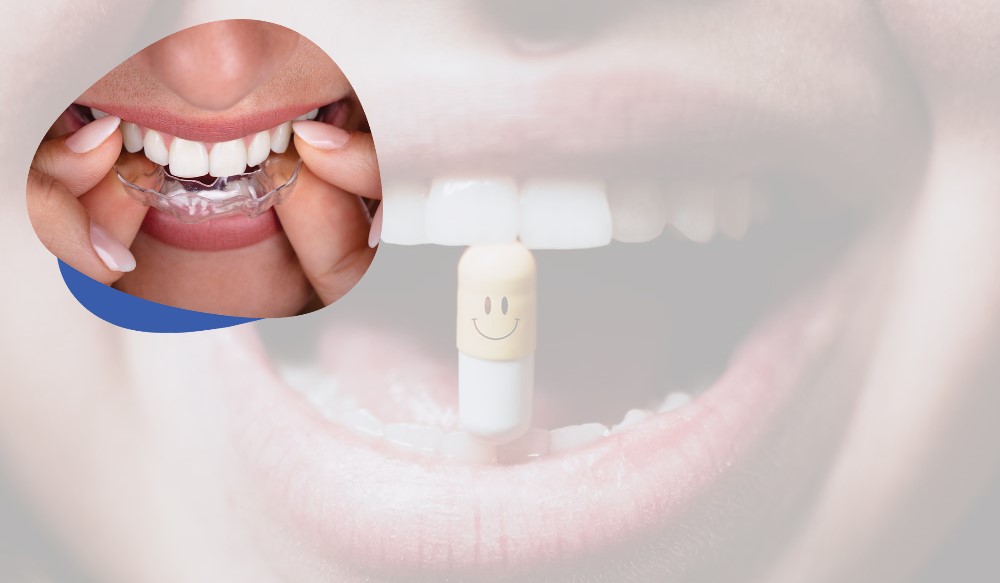Many people unconsciously and involuntarily grind their teeth, exposing them to acute sensitivity due to enamel wear and cavity opening, without even knowing it is a disorder that could negatively affect their general oral health. While Bruxism should cause worry, knowing the likely symptoms associated with it and the possible treatment is the first step of surmounting the condition.
All medical content on this site, including this guide and other product reviews, is written by our team of experienced writers and researchers. All writers from The Toothbrush Expert are recommended and reviewed in the industry. You support us through our editorially chosen links, which earn us commission. Learn more
All of our picks have the American Dental Association (ADA) Seal of Acceptance.
What is Bruxism?
Bruxism is an involuntary teeth-grinding or clenching that occurs mainly during sleep but could also happen consciously. However, not all teeth-grinding amounts to Bruxism. Grinding your teeth when talking or eating is an exception to what Bruxism means.
Thus, it is wildly associated to be a sleep-related disorder. As alien as this disorder might sound, it is so common that most people don’t even realize they have it. When this gnashing and grinding of teeth become excessive, it tends to destroy the teeth’ enamel. It is the destructive nature of this act that qualifies it as a disorder.
In severe Bruxism cases, patients may experience very sensitive teeth, resulting in sharp pain, painful jaw, and tension in the neck region up to the ears area. Chipped teeth and unusual teeth wear are also some of the features and side effects of Bruxism.
In common parlance, those who clench or grind their teeth are called bruxers. Statistics have shown that more than half of the adult population in the United States are bruxers, and these adults are often over twenty-five years old. Teeth grinding in kids are often not as damaging. This is because kids constantly go through teeth growing and jaw formation period that replaces any damaged enamel.
Hence, it is safe to say children could sometimes experience only mild Bruxism that is often less damaging than those found in adults. Because of the permanent nature of an adult dentition, Bruxism is more harmful and painful. Since it is severe, treatments are usually required to reduce the pain and severity of the damage. One of the most common treatments for Bruxism in an adult is the mouth guard, which protects the teeth’ enamel from the consistent damage grinding might cause.
| Preview | Product | Rating | Price | |
|---|---|---|---|---|

|
Neomen Mouth Guards for Grinding Teeth, bite Guard for Teeth clenching Nighttime, bruxism Mouth... | 18,856 Reviews |
$15.98 |
Buy on Amazon |
   |
Dental Lab Custom Teeth Night Guard - Medium Firmness(not a hard guard) UPPER TEETH - Protect Teeth... |
$89.99 |
Buy on Amazon |
Types of Bruxism
The habitual study of Bruxism in adult reveals that Bruxism may be of two types:
- Nocturnal Bruxism: This involves grinding of the teeth during sleep, and it is the most common type of Bruxism. It is often referred to as sleep bruxism.
- Non-nocturnal Bruxism: This involves the involuntary grinding of the teeth while awake. Thus, a person is conscious, but out of habit, they grind their teeth involuntarily. This could be a result of tension, anxiety, and sometimes anger.
Causes of Bruxism
Bruxism is so common, yet its causes are so broad that dentists are yet to find a common point that seems to be the foundational cause of the disorder. Over the years, experts have identified certain factors that may result in Bruxism. They include respiratory infection, allergies, anxiety, stress, drugs, caffeinated drinks, earaches, and so many other similar factors to be examples of what may lead to Bruxism.
Also, due to certain people’s genetic makeup, they may be more prone to Bruxism than others. Nonetheless, below are other detailed factors or causes of Bruxism.
- Age
As mentioned above, adults are more prone to Bruxism than children, and by implication, the older one gets, the more likely to start teeth grinding. This could be due to many other associated factors that are also listed below.
- Drugs and medications
Narcotics or stimulants such as amphetamines, cocaine, heroines could lead to dentition damage and teeth cavities. It may also result in both nocturnal and non-nocturnal bruxism overtime. Also, medications such as anti-depressants might result in involuntary gnashing of the teeth.
- Alcohol and smoking
Excessive consumption of alcohol and smoking could result in higher chances of Bruxism. Smoking especially releases dopamine, and when the brain cells are exposed to it, it might lead to Bruxism.
- Caffeinated drinks and products
Just as excessive smoking could release excessive dopamine into the body, excessive consumption of caffeinated products will do the same and increase one’s chances of developing Bruxism.
- Genetic factors and disorders
Just like most disorders, Bruxism can be genetic and may be passed through a bruxer lineage. Other conditions like obstructive sleep apnea, Parkinson’s disease, attention deficit, hyperactivity disorder, dementia, and night terror have been associated with Bruxism.
Differentiating Between Temporomandibular Joint Disorder and Bruxism
It is easy to identify the grinding of teeth as a feature that is similar to both disorders. However, differentiating between these two disorders goes beyond that. For temporomandibular joint disease, the patient experiences pain in the lower jaw area right up to the ears and the skull. Sometimes, the patient may feel the pain all through the face.
Also, patients with temporomandibular joint disorder experience consistent headache and tension around the neck region and teeth gnashing. Teeth-gnashing is just one of the many painful features of temporomandibular joint disorder from the preceding. The features between the two conditions could be pretty confusing. Hence, the patient would need to consult a dentist to get correctly diagnosed.
Some Common Symptoms of Bruxism
- Headaches and earaches
- Susceptible teeth
- Painful jaw regions
- Pain and tension around the neck
- Teeth clenching
- Sore and mildly painful face
- Chipped teeth
- Mild or complete enamel loss
- Teeth loss
- Teeth cavities
Effect of Untreated Bruxism
If left untreated for a long time, Bruxism may leave the patient in a very uncomfortable position. The painful sensitivity and the enamel erosion due to constant gnashing becomes very overwhelming.
At the most critical stage, a patient may experience permanent dental damage or a jaw disorder, e.g., temporomandibular joint disorder. Other related conditions to Bruxism include:
- Shortened or chipped teeth
- Missing teeth
- Sore jaw, face, and neck
- Persistent headache
- Gum recession
Available Treatment for Bruxism
There are four broad ways to treat Bruxism, and these include using mouth guards and splints, medication, dental correction, or treating associated conditions. Let’s examine each of these four broad ways summarily.
Mouth Guards for Bruxism
Depending on the type of Bruxism, whether nocturnal or non-nocturnal, mouth guards will help protect the teeth enamel from further damage. They are often made from hard acrylic materials, making them suitable for heavy bruxers. Also, they help in repositioning the teeth and realigning the jaw to eliminate pain and soreness from consistent grinding.
| Preview | Product | Rating | Price | |
|---|---|---|---|---|
   |
Neomen Mouth Guards for Grinding Teeth, bite Guard for Teeth clenching Nighttime, bruxism Mouth... | 18,856 Reviews |
$15.98 |
Buy on Amazon |
   |
Dental Lab Custom Teeth Night Guard - Medium Firmness(not a hard guard) UPPER TEETH - Protect Teeth... |
$89.99 |
Buy on Amazon |
Medications
Depending on the factors resulting in a patient’s bruxism conditions, a professionally diagnosed medication can help a patient through the condition. These medications may include anti-depressant and anti-anxiety medication, muscle relaxants, Botox injection, sleep medicines, etc.
Dental Corrections
A professional restoration procedure can help to keep the enamel loss and teeth sensitivity under check. The therapeutic treatment may include dental realignment, orthodontic treatment, Botox therapy, and so on.
Treating Associated Conditions
One of the most effective ways of treating Bruxism is treating the condition factors that may result in Bruxism. These factors could be stress-related or as a result of other medical conditions. For instance, if anxiety or stress is the condition factor for Bruxism in a patient, a professional may recommend stress management therapy or relaxation techniques to keep Bruxism at bay.
Conversely, if Bruxism is linked with other conditions such as sleep apnea, treatment recommendations might be suggested for such a condition first before any other form of bruxism treatment.


Dr Michael Jones is the proud founder of The Toothbrush Expert. He has been working as a dentist for 21 years now. Besides his work as a dentist, Michael wants to help people to find the right dental products. His goal is to provide everyone with honest expert reviews on all kinds of dental care products.


